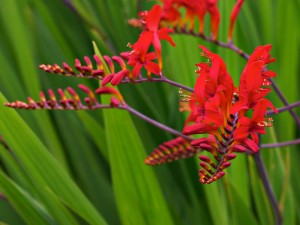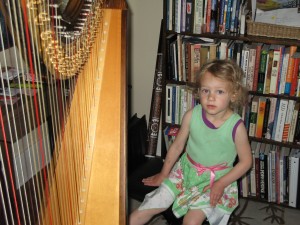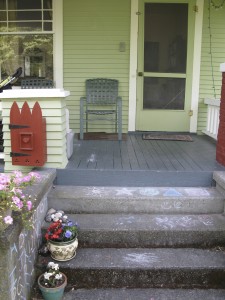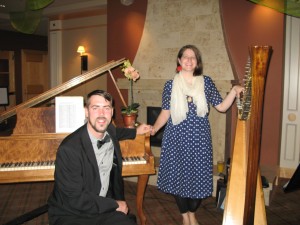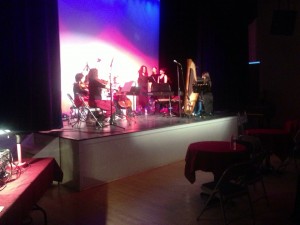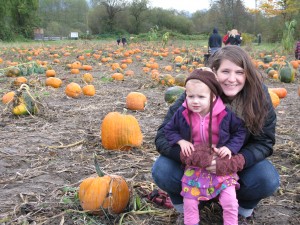My mnemonic device for success in music is PRETH. It looks something like this:
P – Performance $
R – Recording $
E – Events $$$
T – Teaching $$
H – Healing $$$
P is for Performances. These are public shows, orchestra concerts, new music, dance performances, art performances. These are typically events that occur in theaters, halls, public centers (such as Seattle Center), festivals (such as Folklife), clubs, restaurants, museums (last February I performed solo at both Bellevue Art Museum and Seattle Art Museum for after hour patron and public events) and in parks (I have played for the City of Seattle Parks and Rec summer buskers program).
Performances for me don’t usually pay a lot. Sometimes they do, but I can’t rely on them to be a predictable amount. Sometimes I know in advance what I’ll get (orchestral work is forthcoming); sometimes I have no guarantee at all (restaurants and particularly club work). Performances for me can range anywhere from from $0 – $500. Regardless of pay, performances are an essential part of a working musician’s career. It is when I play with my musical family – people like Evan Flory-Barnes, Josh Rawlings, Aham Oluo, Jherek Bischoff to name a few. It is also how I get to play with my peers in public, tell friends to come out and hear me play and hopefully get exposure to some new ears. Performances are the “art” part of a musician’s career, when original songs are played and/or audiences are entertained. Admittedly, I don’t do as many concerts as I’d like to do, largely because I’m mother to a person under the age of two and sleep is unpredictable and precious to me. I can’t be going on stage at 11pm anymore. (groan) I know. I’m boring. I could get depressed and think missing out on something, but I usually don’t. I get to be mom to an awesome little girl (who happens to be fond of music already) and parenthood has made me hip to trying other means of making money in the music biz. Which leads me to the next letter.
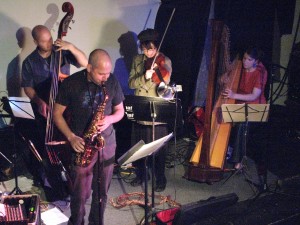
R is for Recording. I don’t think I’ve tapped into my fill potential here. I’ve almost exclusively recorded other people’s music. Out of 100%, I’d say 85% of the recordings I’ve done have been when other musicians are calling me to work on their albums. I’ve been fortunate to have done recording work with some very inspiring and easy to collaborate with people, like bands Hey Marseilles and Secret Chiefs 3.
Albums I want to do personally are #1 my own songs dammit! Q. You write songs? How come I never hear them? A. I am a lazy, slow, audio ludite. But I’m getting better!
At least I have a Soundcloud page and an audio/video page on my website. In the Spring of 2012, I had the awesome chance to be one of the primary musicians (my musical co-collaborator was Saskia Delores) on a huge installation that well-known fiber artist Mandy Greer got commissioned to do at Seattle Center. We recorded hours of tracks at my house and in the field and then played the pre-recordings during the dance performance (under direction of Jessica Jobaris) while I played and sang live on top of those recordings.
Ok. So, back to the R in PRETH: I am putting my twinkle toes in the recording pool this Christmas and have done a few tracks for you the hear, download and hopefully drop a few dollars and cents on a Bandcamp site – coming very soon!
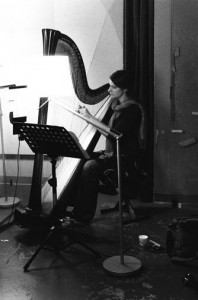
E is for Events. These are private jobs and they make most musicians who play them a fair amount of bread. For a harpist, its fairly predicable seasonal work. Summers are always taken up for weddings. December is always booked with company holiday parties and holiday concerts. Events are categorized as anything where I am background music and/or I am paid privately by an individual, company, hospital, or business entity. I usually like these jobs because I end up meeting interesting new people. In other words, they are weddings and special occasion events.
Once, I played for a wedding of two men (before WA state passed the historic Ref. 74) and they wanted me to play all Dead Can Dance songs on harp – it was so much fun! I’ve been invited to artist colonies in MN, WA, OR and CA. I’ve played at the Microsoft campus. I’ve got an upcoming school concert that I’m very excited about, and every December I play for at least one Seattle Waldorf School’s winter spiral (when kids toddle through a labrynth of evergreen boughs to the center of a spiral and light a candle, eventually making the room a magically candlelit sanctuary by the end of the ceremony). Its one of the most enjoyable things I do every Christmas.
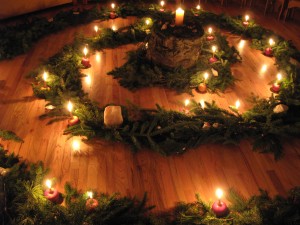
T is for Teaching. Frankly, I wish I had more students. I’m eager to teach actually. Two years ago I resigned from Holy Names Academy adjunct music faculty for a maternity leave. I’m still trying to get back from it! Honestly, teaching is something I had always put on the back burner – having students from time-to-time, but not really going out of my way to advertise. In that way I’ve had random students come to my home who have lived in my neighborhood, or I’ve gone to their home. I’m flexible. My friend Leslie asked me to teach a couple of classes on improvising at the harp and playing harp in a band at her harp camp. Now, I’m itching to share some knowledge about the harp once more. I’m ready to take on students of all musical backgrounds and ages. I’m excited to say, I’m re-opening my home teaching studio in Seattle and also teaching Saturday mornings at Music Works Northwest in Bellevue.
H is for Healing: Did you know that the harp is one of the oldest instruments used for therapeutic purposes? Did you also know that caves in current day France have paintings of a harp that date back to 15,000 B.C? If that doesn’t blow your mind, then perhaps knowing this will: Soothing music will make a person relax; which causes their breath to deepen; which has a domino effect of increasing oxygen flow to the brain, balancing hormones, neuropeptides, and a number of other regulating systems. What music, specifically soothing sounds, can do is to allow the body to relax, and thus unwind that tense state. In contrast, people who don’t take enough deep breaths never allow themselves to be de-stressed and can remain chronically stuck in a “fight-or-flight” state. Music is a tool for good health and recovery from illness. Harp is a primary musical instrument in fighting off stress!
Dr. Mitchell Gaynor’s book “The Healing Power of Sound” is just one of the many scientific books that medically back up the human response to musical healing. Obviously, not all music heals every person in the same way. But certain instruments, particularly long resonating instruments like the harp, are universally recognized as being therapeutic. For instance, the long fibers of the human body resonate with the long strings of the harp more than any other instrument.
This is why I have undertaken a clinical certificate with the Clinical Musician Certification Program aka Harp for Healing to become a therapeutic musician. After I complete a 45 hour internship in a clinical setting, I will then officially be a Certified Clinical Musician (CCM). I intend to play at the bedside and in clinics where my harp music is needed and welcomed.
Q. What is the difference between a therapeutic musician and a Music Therapist. A. Capital letters of course!
All joking aside, the Music Therapist (MT) has a degree in Music Therapy. MT is the active rehabilitation of a patient’s condition with music as the tool. A MT likely can play therapeutic music, but their job is primarily to work with a patient directly in an active way.
Conversely, a therapeutic musician has a certificate to play at the bedside and do not have a degree specific to this work. They work in a passive environment, playing music for clinical patients as well as their staff and family to alleviate stress, pain and discomfort. This can be in the form of bedside music or music in a lobby, operating room, post-op, or neo-natal unit, to name a few clinical places.
And there you have it – my secret to personal success as a musician! I have posted this message partially for myself alone, just so that my goals become more real and take solid shape. I have also written this for other musicians to hopefully look at their own careers as a legitimate business. This is the model I dreamed up for me. I’ve been half way there for years and just now have thought of this mnemonic device to help me stay focused and complete my plan to success as a professional working musician.
